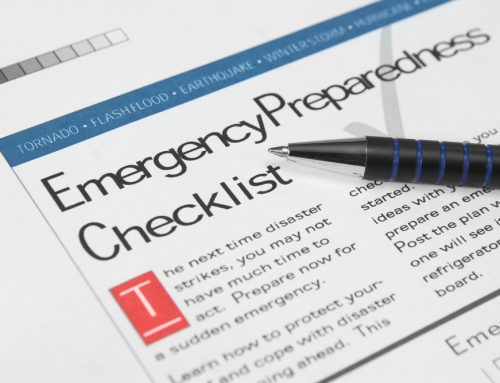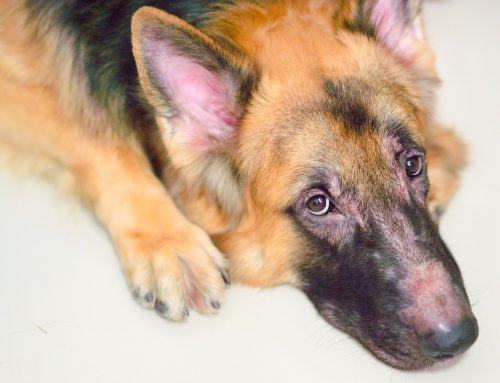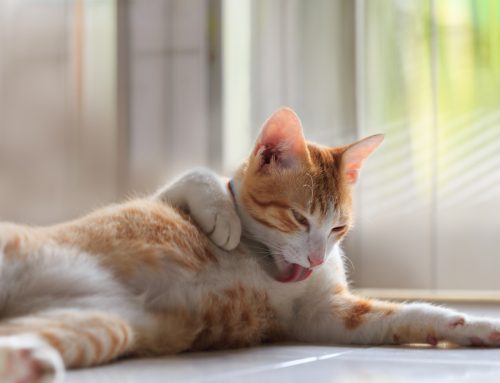Owning a pet is a big responsibility and requires care and attention to all your pet’s health needs. But, some of those needs are more obvious than others, and one component of pet health that even well-meaning pet owners often neglect is right under your nose—or lip, to be more accurate. When was the last time you lifted your pet’s lip and looked under the “hood?” Your pet’s dental health is essential to their wellbeing, and lacking an at-home dental care routine that includes daily brushing and regular professional dental cleanings puts your pet’s teeth—and health—at risk. February is National Pet Dental Health Month, and our Fairfax Veterinary Clinic team is answering questions about veterinary dental cleanings that we commonly hear from pet owners, including the frequency of teeth cleanings.
Question: Why do pets need their teeth cleaned?
Answer: You and your pet are more alike than you think when it comes to dental health. You brush your teeth twice a day and visit the dentist for regular cleanings, and your pet requires the same level of care and attention. Every time your pet eats, sticky plaque starts building up on their teeth and quickly hardens into cement-like tartar—and, we mean quickly. Plaque can harden into tartar in 24 to 48 hours, which is why daily toothbrushing is a must for pets. The tartar calcifies on your pet’s teeth, trapping bacteria in and around the gum line that invade your pet’s tooth roots, and cause painful periodontal disease, infection, abscesses, loose teeth, and tooth loss. Further, the bacteria can leach into your pet’s bloodstream and attack organs such as the heart, which can be life-threatening.
Calcified tartar is nearly impossible to remove through brushing alone and your pet also requires a professional cleaning or their dental disease risk skyrockets. Dental disease is extremely common in pets—up to 90% have some form of dental disease by age 3. You may regularly clean your pet’s teeth at home, but you cannot reach the bacteria trapped under the gums with a toothbrush.
Q: How often does my pet need a dental cleaning?
A: All pets require regular check-ups and cleanings to maintain good oral health and prevent problems. Annual veterinary professional teeth examinations and cleanings are a good rule of thumb for most adult pets, but some will require more frequent attention. Factors that help determine the frequency of your pet’s dental cleanings include:
- Age — Your pet’s dental needs change with age, with older pets requiring more frequent dental care because of the increased wear and tear on their teeth.
- Breed and size — Small- and toy-breed pets may need dental cleanings more often than larger dogs, because their teeth are large relative to the size of their mouth, causing overcrowding. Additionally, smaller breeds are notorious for still having their baby teeth as well as their adult teeth, which exacerbates overcrowding and tartar buildup. Malocclusion (i.e., jaw misalignment that does not allow proper occlusion) is another breed-related dental issue that can lead to a predisposition to dental disease and tartar buildup. Brachycephalic pets (e.g., bulldogs, Boston terriers, and Persian cats) are prone to dental disease, as well as certain dog breeds such as dachshunds and Yorkshire terriers.
- Lifestyle — Heavy chewing pets generate more enamel damage, which requires more frequent cleanings.
Q: What happens during my pet’s dental cleaning?
A: A pet’s cleaning is similar to a person’s. First, the veterinarian will examine every detail of your pet’s mouth and teeth, looking for any obvious dental disease signs. One difference—your pet will require anesthesia to ensure safety for the veterinary team and a safe, thorough, pain-free oral exam and cleaning for your pet. The team uses specialized instruments, such as an ultrasonic cleaner, to remove hard tartar, and may need to perform further treatment, such as tooth extractions, if your pet’s tooth roots are damaged. A complete professional pet teeth cleaning includes:
- Scaling — Tartar is removed from the tooth surface, above and below the gum line.
- Polishing — We polish each tooth to remove microscopic etchings that the scaling creates, where bacteria can adhere.
- Probing — Pockets in the gums indicate periodontal disease.
- Flushing — Irrigating below the gum line flushes away bacteria and debris.
- Rinsing — The final step is an antimicrobial rinse to help reduce oral bacteria.
Q: How can I care for my pet’s dental health between cleanings?

A: At-home pet dental care that includes toothbrushing and dental chews is the gold standard for maintaining your pet’s oral health between veterinary visits, and the best way to monitor your pet’s mouth for disease signs, such as:
- Bad breath
- Red, irritated, or swollen gums
- Trouble chewing
- Dropping food
- Blood in the water bowl or on toys
- Pawing at the mouth or face
- Unusual drooling
- Heavy tartar or discolored teeth
- Broken or cracked teeth
Your pet needs you to make proactive choices to protect their dental health. Contact our team at Fairfax Veterinary Clinic to schedule your pet’s wellness appointment and a dental consultation, or if you need advice on an at-home regimen. We want your pet to eat well and live well, which is not possible if they are suffering with dental disease.








Leave A Comment